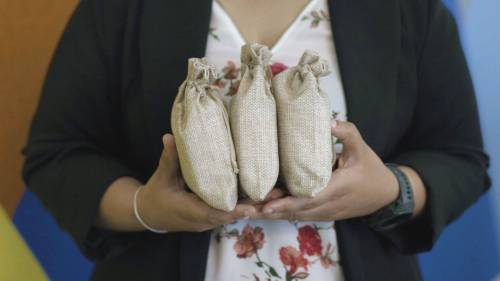The humble menstrual pad has come a long way from its bulky, uncomfortable origins. Today, as I wander through the aisles of pharmacies across Montreal, I’m struck by the revolution happening right before our eyes in women’s health and hygiene products—a revolution being significantly shaped by Canadian voices, innovations, and demands.
The landscape of women’s hygiene has transformed dramatically over the past decade. What was once a market dominated by a handful of multinational corporations offering limited options has exploded into a diverse ecosystem of products addressing needs many consumers didn’t even realize they had. From menstrual cups to period-proof underwear, organic cotton tampons to CBD-infused cramp relief balms, the options seem endless and increasingly personalized.
“Canadian consumers are among the most knowledgeable and demanding when it comes to ingredient transparency,” notes Dr. Maya Feldman, a women’s health researcher at McGill University. “They’re asking questions their mothers never thought to ask, and companies are being forced to respond.”
This shift comes alongside a broader cultural movement breaking down taboos around menstruation and women’s health. Where previous generations whispered about “that time of the month,” today’s consumers are having frank, public conversations about menstrual equity, environmental impact, and chemical exposure concerns. Canadian women, in particular, are at the forefront of demanding products that align with both their values and their health priorities.
The statistics tell a compelling story. According to recent market research, nearly 68% of Canadian women between 18-35 have tried at least one alternative menstrual product beyond conventional pads and tampons in the past two years. Meanwhile, sales of products advertising “organic,” “chemical-free,” or “sustainable” have increased by 37% since 2020.
Vancouver-based Aisle (formerly Lunapads) represents this Canadian leadership perfectly. One of the world’s first reusable pad manufacturers, they’ve been challenging industry norms since 1993. What was once considered a fringe product has now entered the mainstream, with major retailers like Shoppers Drug Mart and London Drugs expanding their offerings to include reusable options.
“There’s been a fundamental shift in consumer consciousness,” explains Madeleine Shaw, Aisle’s founder. “Women are no longer accepting products that contain undisclosed chemicals or create unnecessary waste. They’re voting with their dollars for better options.”
The economic impact is substantial. Canada’s feminine hygiene product market is projected to reach $1.02 billion by 2026, with sustainable and organic segments growing at twice the rate of conventional products. This growth is partly driven by the removal of the “tampon tax” in 2015, making these essential products more accessible while simultaneously creating space for consumers to consider premium alternatives.
But it’s not just about menstruation. The entire women’s health product category is undergoing reinvention. From vaginal health probiotics to fertility tracking devices, products once relegated to doctor’s offices or whispered conversations are now proudly displayed on store shelves and in online marketing.
Montreal entrepreneur Sophie Verrier launched her company BioFemme after experiencing recurrent infections and finding few products that didn’t contain harsh chemicals. “I wanted something that worked with my body rather than against it,” she tells me over coffee. “And I discovered thousands of Canadian women were looking for the same thing.”
Her line of pH-balanced intimate care products has grown 300% year-over-year, primarily through word-of-mouth. “Women talk. When they find something that actually works and doesn’t cause more problems, they tell everyone.”
This consumer-driven revolution extends beyond the products themselves to how they’re marketed and discussed. Gone are the days of mysterious blue liquid and women playing tennis in white shorts. Today’s advertising acknowledges the reality of menstruation, discomfort, and the diverse needs of bodies at different life stages.
The implications reach beyond individual health to environmental concerns. A single person who menstruates will use approximately 11,000 disposable period products in their lifetime. Canadian consumers are increasingly aware of this environmental impact, pushing companies toward biodegradable options, reduced packaging, and extended-use products.
The big question remains: Is this just a passing trend or a fundamental shift in how we approach women’s health? Industry experts suggest the latter, pointing to similar movements in skincare and food that began as niche concerns before permanently transforming their respective markets.
As we move forward, the relationship between Canadian consumers and these evolving product categories will likely deepen. Women are demanding products designed for their actual needs rather than what marketing departments think they should want. They’re reading ingredients, comparing environmental impacts, and sharing honest reviews online.
For companies, the message is clear: transparency, sustainability, and genuine innovation matter. For consumers, the power to shape an entire industry has never been more evident. And for all of us, these changes represent something more profound—a cultural shift toward taking women’s health seriously, without shame or secrecy.
What hygiene products will look like a decade from now remains to be seen. But one thing seems certain: Canadian women will continue leading the conversation, demanding better, and refusing to settle for products that don’t serve their bodies or their values.
For more analysis on cultural shifts in consumer behavior, visit our CO24 Trends section, or explore our in-depth coverage of women’s health innovations in CO24 Culture.














